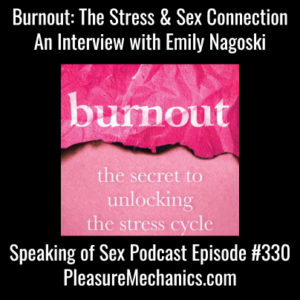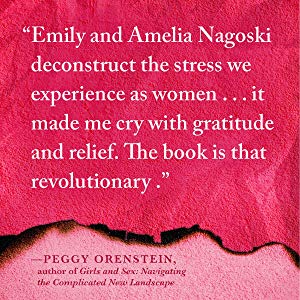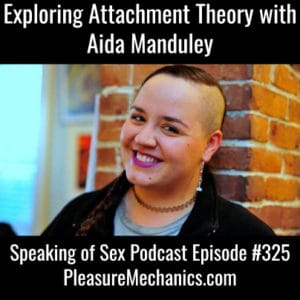Podcast: Play in new window | Download

Feeling disconnected from your partner, and maybe even from yourself? Here is a powerful framework from an award winning couples therapist to help you cultivate more moments of micropleasures into your daily life and loving relationships. Micropleasures are those experiences that bring you pleasure, joy and connection in 60 seconds or less.
Love the show? Click here to show your love and support the show! Thanks!
The 60 Second Pleasure Point framework was originally developed by Peter Fraenkel PhD.
Couples therapists often use this exercise with partners who are on the brink of divorce, in sexless marriages, or struggling with intimacy. By committing to just 3 small acts of pleasure a day, couples are asked to form an “arc of connection” throughout the day. The cumulative results are profound, which is why this exercise has become a classic couples therapy practice.
Here at Pleasure Mechanics, we challenge us all to take on the 60 Second Pleasure Point framework as a way to first slow down and connect with our own pleasure – noticing at least three micropleasures every day – and then daring to share these pleasures with those we love. Small moments of joy and kindness can really add up to change your day, and your life.
Micropleasures can combine well with your understanding of Love Languages – click here for a podcast episode where we talk more about applying Love Languages to your erotic life.
Podcast Transcript:
Podcast transcripts are generated with love by humans, and thus may not be 100% accurate. Time stamps are included so you can cross reference or jump to any point in the podcast episode above. THANKS to the members of our Pleasure Pod for helping make transcripts and the rest of our free offerings happen! If you love what we offer, find ways to show your love and dive deeper with us here: SHOW SOME LOVE
Chris Rose: 00:00 Welcome to Speaking of Sex with the Pleasure Mechanics. I’m Chris.
Charlotte Rose: 00:05 I’m Charlotte.
Chris Rose: 00:06 We are the Pleasure Mechanics and on this podcast we have honest, soulful, explicit conversations about every facet of sexuality, love, relationships, and how it all fits into your busy ass life.
Chris Rose: 00:22 We’re mothers, we’re business owners, I’m chronically ill. We are all on this crazy spinning planet together and our big questions with sex and pleasure is how do we make it work? How do we make it fit into our lived lives? How do we reclaim a sense of pleasure admidst the anxiety of modern life? How do we reclaim our attention and choose to pay attention to one another’s bodies instead of these devices all the time?
Chris Rose: 00:52 This is the first episode of 2020 and these are the kinds of things that are on our minds. How does sex and pleasure actually show up in our lived lives at this moment in humanity?
Chris Rose: 01:08 Welcome. Welcome to Speaking of Sex. Welcome to 2020. If you are new to the show, come on over to Pleasure Mechanics.com you will find our complete podcast archive as well as many ways to engage with us. Go to Pleasure Mechanics.com/free and sign up for our free online course and you’ll be in touch with us and we welcome you to our community.
Chris Rose: 01:35 If you love this show, if we have already touched your lives in some beautiful way, please support this work. We are community-supported erotic education, so come on over to Pleasure Mechanics.com/love where you will find a few ways to show us the love and support the work we are doing. Whether you are new to the show or have been with us for 10 years, welcome to 2020 and a new year with the Speaking Of Sex podcast.
Charlotte Rose: 02:06 Woohoo.
Chris Rose: 02:07 I feel like I want to pop a bottle of champagne. On today’s episode, we are going to be sharing a really simple yet powerful tool, a framework that we can all use right away to create an astoundingly more pleasurable year. This is one of those small things that cumulatively makes a huge difference.
Charlotte Rose: 02:30 A lot of us are really stressed out in the world right now. There is a lot going on. It’s really helpful to have a simple framework where we can practice bringing microdoses of pleasure into our relationships. This is why we picked this topic because we wanted to find something that was simple and doable and had a cumulative effect on creating more love, pleasure and connection for all of us.
Chris Rose: 02:58 When we say microdoses of pleasure what we mean is this, a lot of people find it hard to go from a stressed, anxious, day to day life into this erotic zone of erotic possibility where they’re ready to get naked and roll around with their partner, where they’re even ready to masturbate. Like a lot of us run a lot of stress and anxiety throughout the day and then find it hard to connect with either ourselves or our potential erotic partners.
Chris Rose: 03:26 What this framework does for us is it gives us something to kind of scaffold the commitment to micro pleasures, pleasures that take a minute or less, pleasures that can be peppered in throughout our day and create what the developer of this exercise calls an arc of connection throughout the day. We want to put a little twist on this and say this can be an arc of connection with yourself, with your own damn self, with your own pleasures, your own erotic body, your own sensuality and eroticism and that feeling of pleasure and calm within you. Or it can be practiced with a partner or more partners and be an arc of connection between two people.
Chris Rose: 04:16 This exercise is called the 60 Second Pleasure Point and it is brought to us by Peter Fraenkel, PHD, an award-winning couples therapist, and one of the directors at the Ackerman Institute for the Family in New York city. I first met Peter at a day-long training with Esther Perel where we had all spent … You know, 400 therapists and educators spending the whole day talking about affairs and infidelity and erotic passion.
Chris Rose: 04:47 Peter got up at the end of the day and said, “You know, there’s one thing no one’s mentioned and that’s time and rhythm.” I’m a jazz musician and a therapist and he had spoken earlier in the day and is really well known in the field so we all kind of turn towards the back of the room and he talked about this idea that one of the elements that goes really ignored when we think about our own erotic lives or our erotic connection with another person is timing and rhythm and how we get in sync with one another.
Chris Rose: 05:22 There’s so much more to say about this and maybe we’ll reach out to him and see if he’ll join us for a whole conversation about the temporal rhythms of eroticism. But this exercise, what it asks us to do is find those moments, 60 seconds or less of pleasure and connection and then do them on purpose throughout the day. Peter Fraenkel suggests this exercise for couples who are on the brink of divorce. This is like an intervention for couples who are finding it impossible to connect, can’t get it up to schedule a date night, aren’t ready for like full blown intimacy.
Chris Rose: 06:01 He invites them in therapy to come up with a list of pleasures and connection points that can be accomplished in 60 seconds or less and then each member of the couple commits to doing three a day, one in the morning, one mid day, one in the evening, and so together, collectively, you have about six minutes of pleasure and connection and shared joy.
Chris Rose: 06:23 Over time, what does that make possible? Peter Fraenkel, a PhD, teaches this all around the world to couples therapists and we wanted to share it with you because it’s a really beautiful, simple structure to remind us that these small moments of pleasure, these small moments of connection, and we’ll give you some examples, matter. They accumulate, they matter. What they do is, what we call, they create a culture of pleasure within your relationship.
Chris Rose: 06:55 They are moments of reaching out or reaching into yourself. I really want to emphasize how important this is to just do for yourself. They are moments of saying, “I am going to pause, focus on this thing that brings me joy, pleasure, arousal, titillation, excitement, and I’m going to install it. I’m going to plant it into my nervous system and allow it to change my mood and focus my attention even just for a minute in my busy day.” The results of this are pretty amazing and profound.
Charlotte Rose: 07:27 I love the simplicity of it and I love the idea of two people coming up with a list of 60 second activities that would bring them pleasure.
Chris Rose: 07:37 Do you want to come up with a list right now with me? Popcorn back and forth?
Charlotte Rose: 07:40 Yes.
Chris Rose: 07:41 When we think about 60 second pleasures it’s not like you have a stopwatch out and you’re like, “60 seconds of snogging. Let’s go.” I’ve always wanted to say snogging.
Chris Rose: 07:53 It’s more of like finding these little things that you can do that can be accomplished in a minute or less that gives you a real jolt of pleasure. A simple one might be a really good hug.
Charlotte Rose: 08:04 A really good kiss.
Chris Rose: 08:06 Cupping someone’s face in your hands and just smiling at them while looking at them in the eye.
Charlotte Rose: 08:11 Stroking the head gently.
Chris Rose: 08:14 We’re very touch oriented so I’ll switch it up.
Charlotte Rose: 08:15 We can shift. Yeah.
Chris Rose: 08:18 You can bring one another a snack. You can arm wrestle, share a joke.
Charlotte Rose: 08:24 Do charades.
Chris Rose: 08:26 As a family, we’re really into charades right now. But making one another laugh even with like a little stupid charades moment is playful and funny and can really break tension. What are some other ideas? You can do a 60 second puzzle together and some people really get into like racing one another in Sudoku.
Charlotte Rose: 08:47 You can read a poem to one another.
Chris Rose: 08:50 Do a quick dance, a little dance move, a sway, a dip.
Charlotte Rose: 08:55 Taking a photo while you’re out in the world and texting it to them and sending a sweet note with it.
Chris Rose: 09:02 Sending a meme or something that will make your partner laugh.
Charlotte Rose: 09:06 Sending a menu from a restaurant and saying, “Would you like to try this this evening?”
Chris Rose: 09:12 Picking up a little thing in a store you see because you know your partner will be delighted.
Charlotte Rose: 09:17 Sharing a toast.
Chris Rose: 09:19 Bringing a cup of coffee. Making toast and jam. That just made me hungry for toast. I think you were talking about like a champagne or a wine toast over dinner.
Chris Rose: 09:29 You get the idea and you can also map these into the five love languages, so words of affirmation, gifts, touch, acts of service and quality time. Think about your partner’s love language and your own. If you don’t know what I’m talking about, check the show notes page. We’ll link up a few episodes.
Chris Rose: 09:51 But if you can think about … And it’s a good exercise to sit down together at dinner or over a cup of coffee and just jot out what are quick things that make you happy. You can do this again for yourself or within your relationship.
Chris Rose: 10:07 As a couples therapy exercise, the classic 60 second pleasure point connection exercise is very relationally-focused, the pleasures you share and the pleasures you bring to one another, the pleasures you give and receive.
Chris Rose: 10:23 We believe here at Pleasure Mechanics it’s also really important to practice this with pleasures that you can share just with yourself, pleasures you can really sink into, feel completely, feel whatever the effect of them is, right? Because pleasure sometimes brings us warm, calm fuzzies and sometimes makes us thrilled and aroused and excited. Having a 60 second pleasure, feeling it fully, and then moving on with your day is super powerful.
Chris Rose: 10:56 Creating micro-pleasures on purpose, delighting in them, your day changes. Your days change, your weeks change, your months change, your years change, your life changes. It’s just cumulative and I’m coming at this as someone who was very tuned out of pleasure. I had a really hard time in my body. I was very dissociated. I was very numbed out. I had a lot of trauma and being invited into this kind of life over 13 years ago, learning massage, being asked to focus on the pleasure that my body was capable of experiencing in these tiny sips. Right? Please notice we are not throwing you into the depths of orgasm here. We are saying pay attention to a moment that delights you and then possibly share it with another human being. That’s all this is.
Chris Rose: 11:52 You’re walking down the street and you see a gorgeous flower. Like, stop, take a minute, enjoy it for yourself, and then maybe if you wish, snap a photo, send it to your lover and say, “The second favorite pink I’ll see today.” Right? Or like whatever your take on that is or, “Your face is just as lovely as this flower, my dear”, right? Like you can be raunchy with this. You can be silly. You can be really loving and tender. That will depend on who you are and where your relationship is at. The point is experiencing pleasure and then sharing it together in these micro moments.
Charlotte Rose: 12:31 It’s so doable and it’s this moment where you’re expressing care and that matters.
Chris Rose: 12:36 Care? Why? Why is this expressing care?
Charlotte Rose: 12:39 If you’re sending a note saying you’re thinking about them, you’re away from each other in the day and the text comes in that somebody is thinking about you and loving you and sending you words that uplift you in some way, it’s precious and this changes our chemistry and that’s why it’s so powerful because it shifts how we show up for the next 10 minutes or an hour of the day. That’s why it’s so powerful.
Charlotte Rose: 13:04 I also want to say that people who aren’t in relationships, yes, they can do it for themselves, but also to share these moments with friends and build your connections, your social connections, your kinship with people is powerful. In our culture we forget about those relationships or don’t name them as as important as a romantic relationship, but we really value and want to keep cultivating those connections deeply as well.
Chris Rose: 13:29 Shared feelings matter no matter who you’re sharing them with.
Charlotte Rose: 13:33 Lovely.
Chris Rose: 13:36 Shared feelings and when you say you feel cared for when you’re on the receiving end of this I think it’s important to remember that just that moment of realizing someone you care about has been thinking about you, remembering the things that you enjoy, and then sharing them with you … Like if you get a funny text from a friend in front of a movie poster with an actor they know you have a crush on it just creates that little thread of connection where you’re both delighting in something together.
Chris Rose: 14:08 This is like scientifically proven to uplift our mood, calm our nervous systems, make us sleep better, right? Like the science geeks would go off on all the clinical data behind something as simple as a shared moment of pleasure.
Chris Rose: 14:25 For us, what’s important is that it’s felt, it’s real and it’s doable. It’s doable. And so I want to challenge all of us to take on this 60 second pleasure point challenge, to all come up with lists of things that can be done in 60 seconds or less that make us feel joyful, that give us pleasure, that arouse us. You can even kind come up with some categories like what are the calm pleasures in 60 seconds or less and what are the arousing thrills? Then things that you can share with friends, with different people in your community, with your lover or lovers, and then to do this. That’s where it really kicks in is when you commit to doing it.
Chris Rose: 15:13 If you’re paying for couples therapy and you have a therapist saying you’re each going to do this three times a day and then come back next week, you’re more likely to take that seriously because you’re paying for that accountability. Here we’re going to invite you to just commit to doing this because you’re going to notice awesome effects in your life and you’re going to notice the uplift and then you’re going to tell us about it.
Charlotte Rose: 15:35 Many of us in a quiet moment during the day will pick up our phone and check email again or scroll and these are the moments where instead we can choose and challenge ourselves to intentionally create a moment of connection instead. I am sure that we have many of those moments in the day and this is where we can shift our habits and our behavior and it will create a much bigger outcome if we choose to take those simple moments and connect with one another instead of mindless scrolling.
Chris Rose: 16:07 Well, there’s the scrolling and we mentioned like sending texts, sending photos, so we’re not saying don’t use your devices for doing this, right? You can use your devices to connect really meaningfully. Or a lot of the time our devices leave us feeling lonely and isolated and isn’t that interesting? We need to look at that. How do we actually feel more connected through our devices?
Chris Rose: 16:32 You know, I also want to mention the timing and rhythm thing here because some people have jobs where they can receive sexy texts at work and other people do not. Part of this finding your rhythm and getting in sync is respecting your partners needs around the timing of your communication. Maybe you need to leave them alone all day and then at five o’clock you know they’re getting out of their job and you can send them a ping or maybe instead of texts you have a private email account where you can send each other sexy things knowing they will log on on their own time. For other people that thrill of having their phone ding all day long will be exciting and a welcome part their day.
Chris Rose: 17:16 You need to communicate about this. How do we want to connect? What is this arc of pleasure? Because this idea of the arc of pleasure what this does, it’s not just the isolated micro moments. It’s like you start the day with a moment of shared pleasure. You have another one as you’re heading out the door. You get a few throughout the day. You come home to one, you go to sleep with one and your day, no matter how stressful, now has five, six points of connection in it. That’s really meaningful. If we don’t do this on purpose, it is possible to go day after day without actually taking one minute to deeply connect and share pleasure.
Chris Rose: 18:01 That’s what’s kind of harrowing is is if we don’t do this on purpose, how easy is it to let it slip and just kind of move around your home if you’re cohabitating with someone or be like, “Yeah, we’ll see each other Friday night. Okay” and then you get there on Friday night, you’ve had no shared pleasure throughout the week. You’re barely connected, you’re not in sync, and you’re expecting to like connect and go into bliss space and fuck? Like that’s a lot of pressure.
Chris Rose: 18:25 What this does, that arc of connection, Peter Fraenkel talks about, it’s like dropping notes in and then a song appears. This is a self-motivating system, so because it feels good, because it affirms the social animals within us that want to feel things together, we tend to do more of them. As you do them, you tend to do more of them. They get longer than 60 seconds and lo and behold, you’re actually practicing these daily forms of pleasure just because, because it’s good, because it makes you feel better in your day and it doesn’t distract from your purpose. It doesn’t take away from your job, it doesn’t take away from your responsibilities. It’s just peppered in and it kind of brightens your day and you learn what works. You pay attention to like, “Oh, that was like a really fun thing” versus like, “Eh”, and you accumulate the wins.
Chris Rose: 19:21 All right. We would love to hear how this has been working for you. If we all commit to this for the next week and then if you are in touch with us, we would love to hear from you. This year in 2020 we would like to try something new with you. We would love to start gathering your voice memos. In the past you’ve emailed us a lot of questions. We would love to start hearing your voices and sharing your voices with one another. If you have a question for us or a testimonial about how one of our ideas or techniques have impacted you, record a short voice memo on the voice memo app on your phone and email it to us at Chris at Pleasure Mechanics or Charlotte at Pleasure Mechanics and we will gather these up and share them on future episodes.
Chris Rose: 20:14 Again, record a voice memo. Send it to us at Chris at Pleasure Mechanics or Charlotte at Pleasure Mechanics dot com or go to Pleasure Mechanics.com/hello and get in touch with us that way. We Would love to hear from you.
Chris Rose: 20:28 Welcome to 2020 it’s going to be an intense year, but we are in this together. All billions of us on this beautiful spinning planet earth we are in it together. We are here for you and you can reach us anytime. Come visit us at Pleasure Mechanics.com. We have our whole podcast archive waiting for you and lots of ways to be engaged at Pleasure Mechanics dot com/free. We love you. We’re here for you. I’m Chris.
Charlotte Rose: 21:00 I’m Charlotte.
Chris Rose: 21:01 We are the Pleasure Mechanics.
Charlotte Rose: 21:02 Wishing you a lifetime of pleasure.
Chris Rose: 21:05 Cheers.





